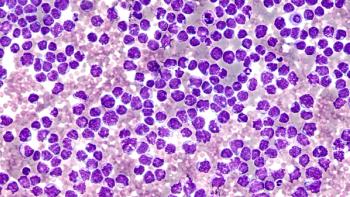
Understanding Clinical Considerations for Patients With Both COPD, Cardiovascular Disease
A recent review discussed how to manage comorbid cardiovascular disease in patients with chronic obstructive pulmonary disease (COPD).
Authors from Moscow and Geneva outlined various forms of CVD and what effect they each have on the health of those with COPD as well as quality of life. The authors said that CVD and COPD coexist due to shared risk factors, the mechanisms of their interactions, and influence of systemic inflammation. A typical patient with COPD suffers from an average of 4 comorbidities and a third of patients can be taking 5 to 10 different drugs, the authors said. Therefore, they added, it is extremely important to determine the significance of a particular comorbidity for the treatment of COPD.
The common shared risk factors for CVD and COPD are smoking, age, and not following a healthy lifestyle (physical activity, nutrition, etc.). Whether one smokes is the most important factors, as it has negative effects on both the lungs and the cardiovascular system, the authors said.
“Individuals susceptible to damage caused by pollutants and smoking can suffer from both heart and lung disease,” they wrote. “Just as pulmonary disease can contribute to heart disease, cardiac illness can itself contribute to pulmonary disease.”
Another factor in the relationship between COPD and CVD how lung hyperinflation and the resulting increased size of the lungs can compress the heart muscle and hinder its ability to pump blood through a patient’s body. As the authors point out, other published literature demonstrated that the severity of COPD and the appearance of emphysema are associated with the decrease in heart size during X-ray exams.
A decrease in inforced expiratory volume in 1 second (FEV1) is linked with an increased risk of cardiovascular mortality, the authors said. For patients with COPD, the risk of CVD is about 2 to 3 times higher than comparable persons, the authors said. Other studies have shown that about 2 in 5 patients with mild to moderate COPD died due to CVD. That represents about 8 to 10 times more risk than deaths in the same group due to respiratory insufficiency, the authors said.
Coronary heart disease (CHD) has a strong relationship with COPD in terms of epidemiology and shared inflammation factors, the authors said. The prevalence of COPD patients with CHD is high, but there is a high level of underdiagnosis. That is also the case for congestive heart failure (CHF). When the authors compared patients with and without CHD, they found that those with CHD were characterized by older age, male sex, higher smoking index, lower quality of life, tolerance of physical activity, increased intensity of shortness of breath, and a longer recovery period after exacerbations, they said.
Arrhythmias (AF) are prevalent in between about 5% and 15% of patients with COPD, but that prevalence increases with very severe COPD, the authors said. In patients with AF, the prevalence of COPD can also reach 65% in patients older than 65 years. The frequency of AF is related to FEV1. In published studies, AF was a negative prognostic factor in patients with COPD in terms of their quality of life and health status, risk of hospitalizations, and mortality from all causes, the authors said.
Heart failure (HF) is also significantly more prevalent among patients with COPD (10% to 30%) compared with the general population (1% to 2%). One meta-analysis they pointed to determined that COPD increased the risk of mortality in patients with HF. Patients with both COPD and HF skewed slightly older than patients with COPD but not HF and also were a higher percentage of men, had more apparent symptoms and had more concomitant diseases, the authors said added. HF and COPD have different triggers that cause exacerbations, leading to difficulty in diagnoses, the authors said.
“It should be emphasized that COPD patients today are a heterogeneous group of subjects with a complex multimorbidity, requiring a differentiated approach,” the authors concluded. “Current available data cannot answer all the questions faced by doctors of different specialties, who encounter such patients in their daily practice. At the same time, it becomes obvious that only an integrated holistic multidisciplinary approach will achieve success in the understanding and management of this group of patients.”
Reference
Aisanov Z, Khaltaev N. Management of cardiovascular comorbidities in chronic obstructive pulmonary disease patients. J Thorac Dis. 2020;12(5):2791-2802. doi: 10.21037/jtd.2020.03.60
Newsletter
Stay ahead of policy, cost, and value—subscribe to AJMC for expert insights at the intersection of clinical care and health economics.













































